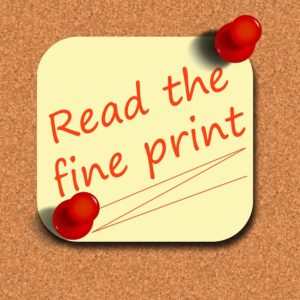
While originally published way back in 2010, this information doesn’t seem to be reaching all those that are interested. We decided to repost this info as it is hardly outdated. If anything, there is ever more research to show that this is true and problematic. In case you didn’t know: 3,163 ingredients hide behind the word “fragrance”. (Actually it is 3,999+ now.)
Yes, you read that correctly. The Environmental Working Group (EWG) continues to point out that a very large number of chemical compounds can be included in a wide variety of consumer products, including personal care products and cosmetics, and the manufacturers do not have to disclose what they are. Many of these mystery ingredients are most certainly harmful to human health. Harmful to YOUR health.
Companies can get away with this because the US Food & Drug Administration (FDA) allows companies to hide behind the idea that certain ingredients or formulations are “trade secrets” – and therefore do not legally need to be disclosed. But you don’t have to take our word for it (or that of EWG either for that matter). You can read about this legal “policy” (loophole?) on the FDA’s own web site here and here.
The EWG also elaborates that whenever you see the word “fragrance” on an ingredient label, you should just translate it to mean “hidden chemicals” because that is essentially the reality. We don’t always agree with everything the EWG puts out, but in this case we certainly do.
Where are we getting the number of 3,999 ingredients hidden as “fragrance”? From the International Fragrance Association (IFRA). You can see their published list here. You can read their explanation of the list here. Note that the current number of 3,999 has increased from the number of 3,163 that the EWG originally published back in 2010. While this list from IFRA pretends to provide transparency, in reality it does not, because consumers have no way of knowing which of the 3,999 ingredients might be in a particular product containing “fragrance”. (And some of those ingredients put consumers health at risk.)
Which is why we always say that any time companies are not providing transparency and full disclosure about ingredients, you cannot trust them.
This is also why we provide full disclosure of all of our ingredients, never use questionable ingredients that may harm your health, always use healthy ingredients, and always work to earn and maintain the trust of our customers. That’s a simple but surprisingly unique value that we offer that few other companies do. So go try out some of our products – it’s risk free since we offer a 100% money back guarantee.
Below is the full original article as found on the EWG site.
For Health,
Rob

3,163 ingredients hide behind the word “fragrance”
Enviroblog readers all know that “fragrance” is a term that the cosmetics, cleaning and candle industries use on ingredient lists that discloses only that there are unnamed chemicals in the product.
Which is not so helpful for avid label-readers (like me) who want and deserve full information when choosing products. Unless you use it as a red flag of what not to buy, that is. Then – and only then – is it helpful.
It’s pretty big news that, after years of intentional mystery, the International Fragrance Association (IFRA) decided to publish an alphabetical list of ingredients that its members reportedly use to make consumer products.
Why’d they do it?
Simple: consumers want more transparency (yes, you’re being heard!). And while this isn’t exactly the kind of transparency we had in mind, or that helps consumers make informed decisions about their health, it’s a step. (And it’s a decent PR move for IFRA, right?)
A long list with some bad actors
A long list of chemicals that you can’t pronounce is not in itself toxic – even if it looks it. But an analysis of these 3,163 chemicals in EWG’s Cosmetics Database shows that there is reason for concern.
In fact, 1 in 20 earned a “high” hazard score (7-10 of 10), and a full 1 in 6 rated at least a “moderate” hazard score (3-10 of 10). 25 of them scored a 10, the highest score:
25 chemicals scored a “10” in Skin Deep: Aniline, BHA, Cyclohexanone, Dibutyl phthalate, Diethylhexyl phthalate, Hydroquinone, MIBK, Nano titanium dioxide, Nano zinc oxide (20-60nm), Octoxynol-6, Octoxynol-7, Octoxynol-11, Octoxynol-12, Octoxynol-13, Octoxynol-16, Octoxynol-20, Octoxynol-25, Octoxynol-30, Octoxynol-33, Octoxynol-40, Octoxynol-70, PEG-3, PEG-6, Sorbitan oleate, Resorcinol, Styrene.
Some chemicals on the list are very troubling. Of the 3,163 chemicals listed, several stand out as particularly toxic: phthalates, octoxynols and nonoxynols. Phthalates are potent hormone disruptors linked to reproductive system birth defects in baby boys. Octoxynols and nonoxynols break down into persistent hormone disruptors, as well.
What kind of products contain these chemicals? All kinds. To name several: facial cleanser, after shave, astringents, hair color, cleaning products, and acne treatment.
The best way to reduce your exposure to fragrance chemicals
While this new information adds to our knowledge about fragrance chemicals, it doesn’t change our longstanding advice for choosing safer cosmetics: read the label, skip the fragrance, and look up your products in EWG’s Cosmetics Database. [Thanks to Flickr CC & Annieo76 for the lovely array of perfumes]
Nature's Complement is a participant in the Amazon Services LLC Associates Program, an affiliate advertising program. If you purchase products on Amazon through any of our affiliate links, we get a small percentage of the transaction, at no extra cost to you. We spend a lot of time writing the articles on this site, and all this information is provided free of charge. When you use our affiliate links, you support the writing you enjoy without necessarily buying our products. (However we would appreciate if you would do that too!) Thank you for helping to support our work, however you choose to do so.
These statements have not been evaluated by the Food and Drug Administration. This information and/or products are not intended to diagnose, treat, cure or prevent any disease.


